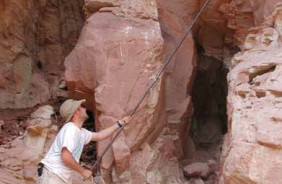
Product Details
- Product Number
- 208880
- Series
- FS-2008-3097
- Scale
- NO SCALE
- Alternate ID
- FS2008-3097
- Version Date
- 12/01/2008
- Countries
- USA
- Media
- Paper
- Format
- Folded
Additional Details
- Description
- 02/03/2008 Abstract Human activities, especially the burning of fossil fuels such as coal, oil, and gas, have caused a substantial increase in the concentration of carbon dioxide (CO2) in the atmosphere. This increase in atmospheric CO2 - from about 280 to more than 380 parts per million (ppm) over the last 250 years - is causing measurable global warming. Potential adverse impacts include sea-level rise; increased frequency and intensity of wildfires, floods, droughts, and tropical storms; changes in the amount, timing, and distribution of rain, snow, and runoff; and disturbance of coastal marine and other ecosystems. Rising atmospheric CO2 is also increasing the absorption of CO2 by seawater, causing the ocean to become more acidic, with potentially disruptive effects on marine plankton and coral reefs. Technically and economically feasible strategies are needed to mitigate the consequences of increased atmospheric CO2. The United States needs scientific information to develop ways to reduce human-caused CO2 emissions and to remove CO2 from the atmosphere.
- Survey Date
- 2008
- Print Date
- 2008
- Height In Inches
- 11.000
- Length In Inches
- 8.500
- Two Sided
- Yes
- Pieces
- 1
- Languages
- English
Related Items




